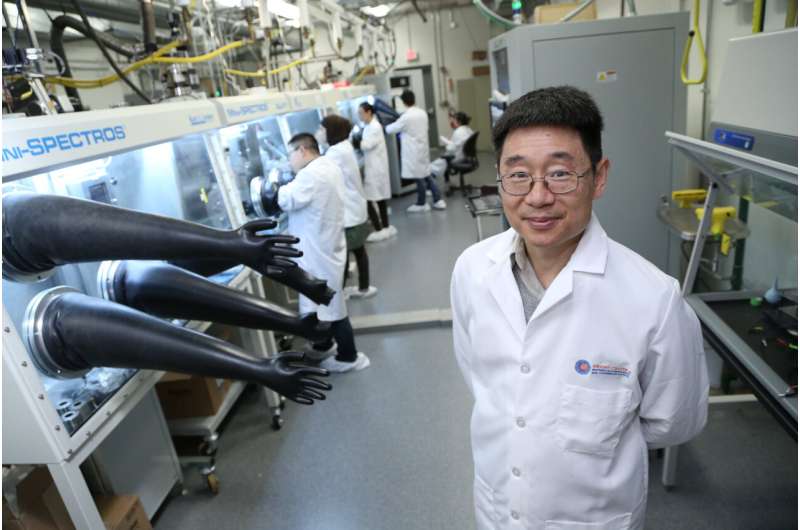This article has been reviewed according to Science X's editorial process and policies. Editors have highlighted the following attributes while ensuring the content's credibility:
fact-checked
peer-reviewed publication
trusted source
proofread
Physicists solve durability issue in next-generation solar cells

Physicists in the U.S. jumped a major hurdle standing in the way of the commercialization of solar cells created with halide perovskites as a lower-cost, higher-efficiency replacement for silicon when generating electricity from the sun.
Published in the journal Science, the clean energy research led by The University of Toledo in collaboration with the University of Washington, University of Toronto, Northwestern University and Swiss Federal Laboratories for Materials Science and Technology solved the problem with the durability of perovskite solar cells, taking the technology one step closer to powering solar panels in the consumer market.
"Perovskite solar cells offer a route to lowering the cost of solar electricity given their high power conversion efficiencies and low manufacturing cost," said Dr. Yanfa Yan, UToledo Distinguished University Professor of physics and a member of the UToledo Wright Center for Photovoltaics Innovation and Commercialization. "However, we needed to strengthen the emerging solar cell technology's endurance during outdoor operation."
The technology needs to survive for decades outdoors in all kinds of weather and temperatures without corroding or breaking down.
"This challenge is no longer a roadblock to deploying the potential of perovskite solar cells," Yan said. "Our breakthrough work improved device stability and presents ways of achieving success after a decade of research and development."
The team discovered the ingredient that enhances adhesion and mechanical toughness.
Researchers experimentally demonstrated that perovskite solar cells treated with 1,3-bis(diphenylphosphino)propane (DPPP), a diphosphine Lewis base molecule, retained a high power conversion efficiency and exhibited superior durability after continuous operation under simulated and outdoor conditions.
"Phosphine-containing Lewis base molecules with two electron-donating atoms have a strong binding with the perovskite surface," Yan said. "We saw the robust beneficial effects on perovskite film quality and device performance when we treated the perovskite solar cells with DPPP."
"DPPP is also a commercialized product with low cost and easy accessibility, which make it suitable for the commercialization of perovskite solar cells," said Dr. Zhaoning Song, a research assistant professor in Yan's lab at UToledo and one of the authors on the new paper.
Researchers say the next step to move the technology forward is to employ their findings to make perovskite panels stable.
Dr. Chongwen Li, the first author of the study and a UToledo alumnus, worked with Yan as a graduate student. Li earned his Ph.D. in physics from UToledo in 2020. He is a postdoctoral researcher at the University of Toronto.
"Continuing to exploit the potentiality in the stability of perovskite solar cells is a crucial priority for the ongoing decarbonization of the world's economy," Li said. "After the successful demonstration of DPPP on improving the stability of perovskite solar cells, we are further applying it to large area perovskite solar panels and moving the prototype device forward to commercialization."
UToledo has been a trailblazer in solar energy research and development for more than 30 years.
It has been a decade since Yan's team at UToledo identified the ideal properties of perovskites, compound materials with a special crystal structure formed through chemistry, and started to focus their efforts on bringing together two different solar cells to increase the total electrical power generated by using two different parts of the sun's spectrum.
In November, a team of scientists from UToledo, the University of Toronto and Northwestern University collaborated to create an all-perovskite tandem solar cell with record-setting voltage. The research was published in the journal Nature.
More information: Chongwen Li et al, Rational design of Lewis base molecules for stable and efficient inverted perovskite solar cells, Science (2023). DOI: 10.1126/science.ade3970. www.science.org/doi/10.1126/science.ade3970


















